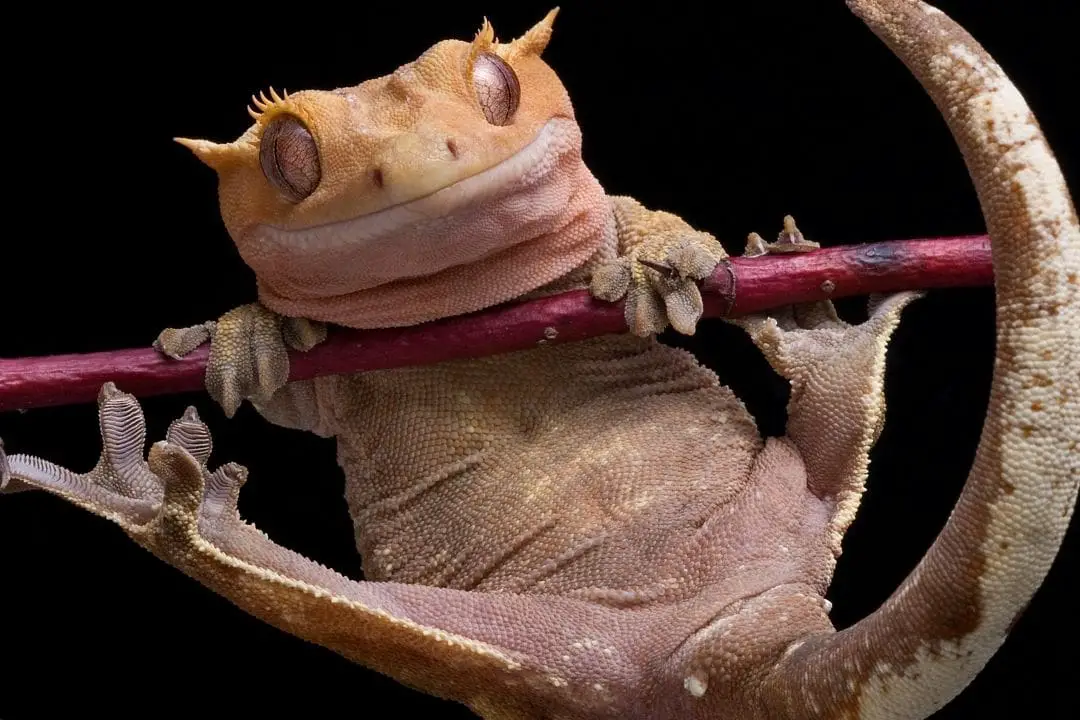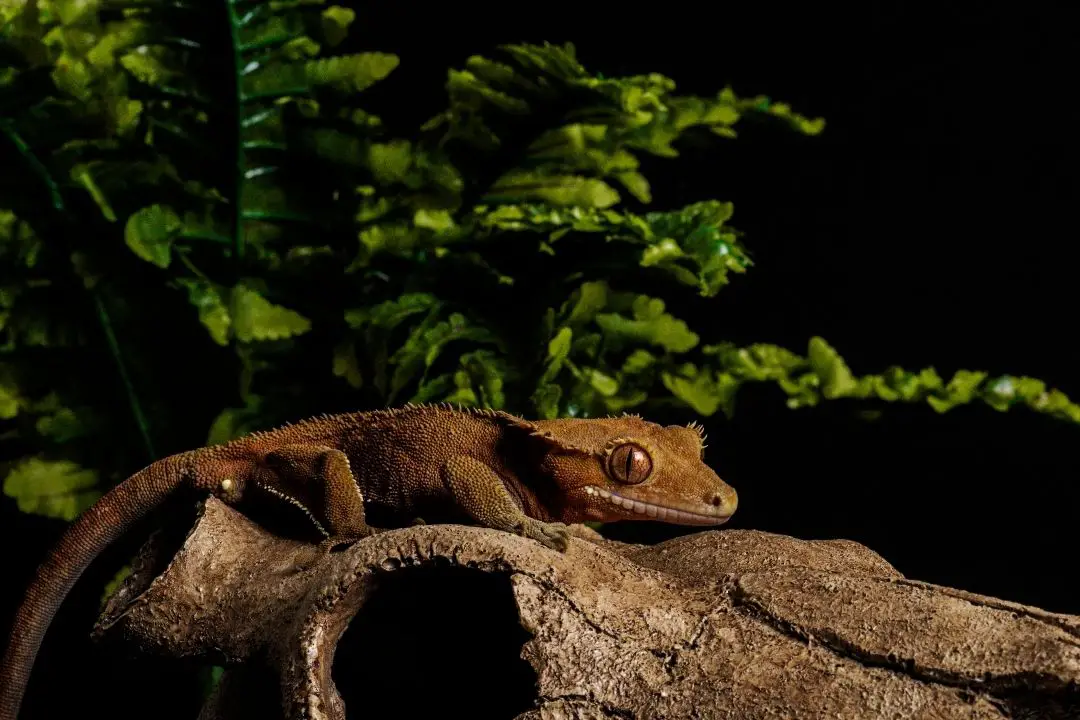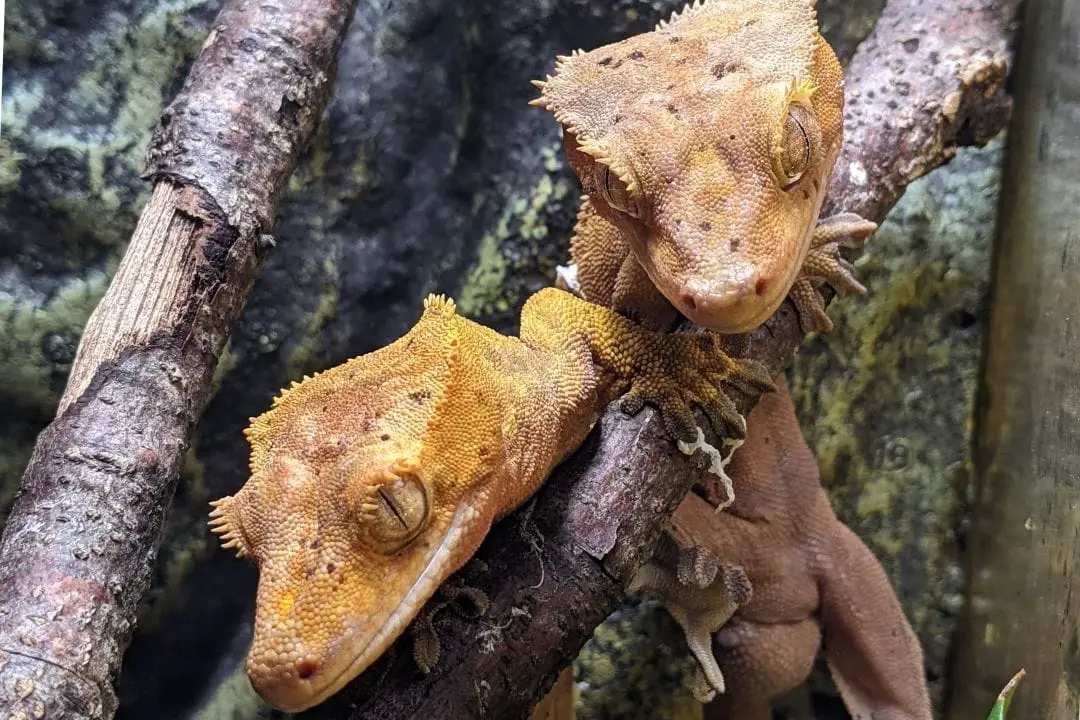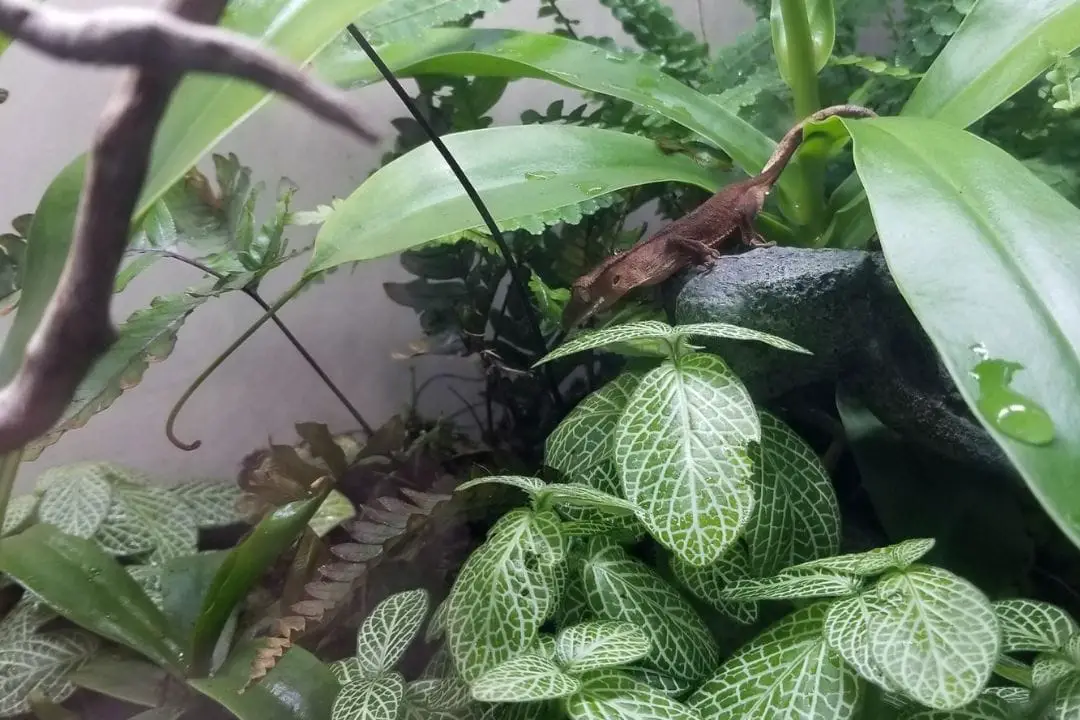Crested geckos (Correlophus ciliatus) are great little animals. If you want to learn more about the species, here are some great facts about them.
1. Common Names
Crested geckos are known by a few different common names. They are also called eyelash geckos and some older sources on the species call them Guichenot’s giant geckos after their discoverer.
2. Crested Geckos Were Once Thought Extinct
The crested gecko was originally described in 1866 by Alphone Guichenot. They were seen for a few decades and then disappeared.
No animals were found in the wild until 1994. The species was then moved to be considered vulnerable.
3. Only Three Populations
Crested geckos are native to the Isle of Pines, surrounding islands, and the southern tip of Grand Terre.
There are two populations on Grand Terre and the population on the Isle of Pines and surrounding islands are considered to be one population. There may be more populations in the north of Grand Terre as well.
4. Numerous in Their Range
They do have large populations in the wild, but their restricted range and introduced threats like fire ants threaten the population.
Habitat degradation and wildfires also threaten the population. This means that it is not legal to export the species at the time of writing.
5. Limited Gene Pool
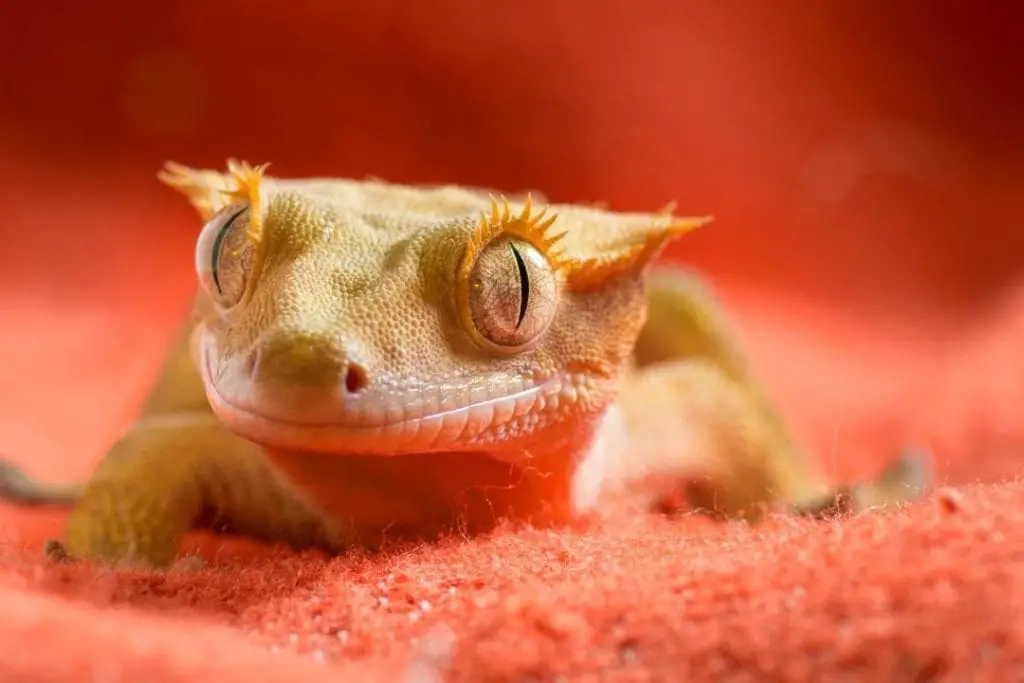
All crested geckos in captivity are descended from a few hundred crested geckos that were exported for study. Now, they are very common pets in many countries.
It can be a struggle to avoid inbreeding captive geckos since the foundation population was so small.
All captive crested geckos are descended from geckos collected from the Isle of Pine population.
6. Crested Geckos Have No Eyelids
Like many other geckos, crested geckos do not have an eyelid. Instead, their eye is protected by a clear scale called a spectacle.
7. Crested Geckos Lick Their Eyeballs
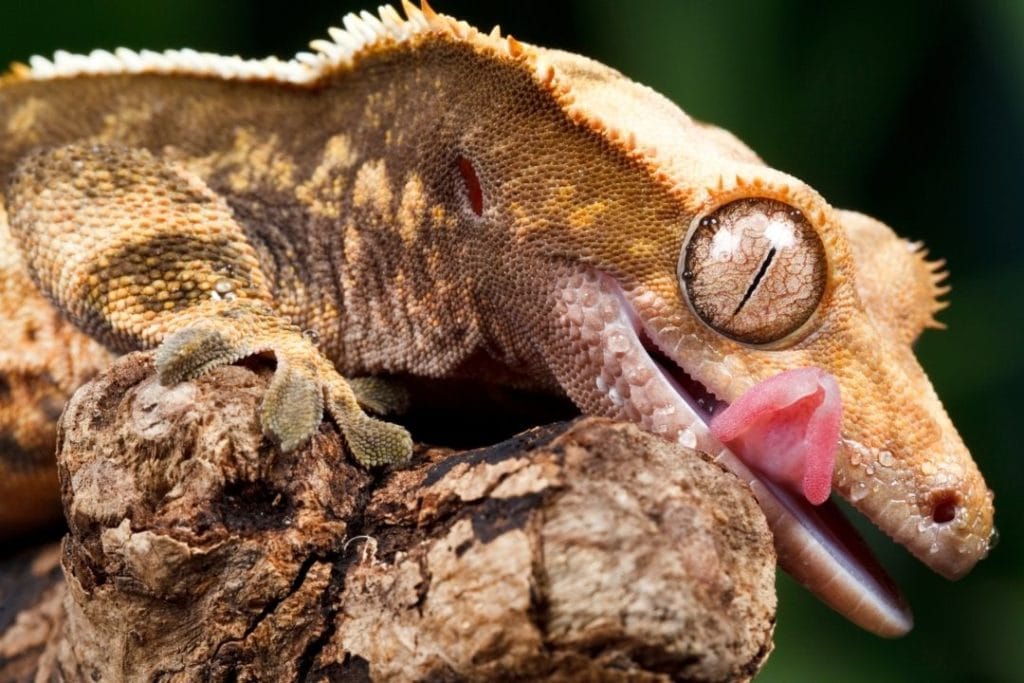
One of the more famous behaviors in crested geckos is eyeball licking. Since they do not have eyelids, crested geckos use their tongues to clean their eyes and remove debris.
8. Arboreal
Crested geckos in the wild live in the trees. They spend most of their time in the trees hunting for insects, fruit, and flowers to eat. They can go down to the ground but rarely spend much time on the ground.
9. Leaps of Faith
Wild crested geckos that want to travel to a new tree or flee from predators will make a leap of faith. Since the area they live in is heavily vegetated, they normally find a vine or branch to catch and break their fall.
Regrettably, they keep this behavior in captivity. Captive crested geckos will jump from your hands and can easily be hurt if they do not find a soft place to land.
10. Soft Skin
Crested geckos have very small scales. This makes them feel very soft compared to other lizards. Most owners compare the feeling to suede. This makes them very satisfying to hold and gently pet if the animal will tolerate it.
11. Crested Geckos are Crepuscular
Crested geckos are considered crepuscular. This means that they are awake at dawn and dusk. They can be more active at night and they generally sleep during the day. This makes them a better choice for night owls.
12. Crested Geckos Make Noise
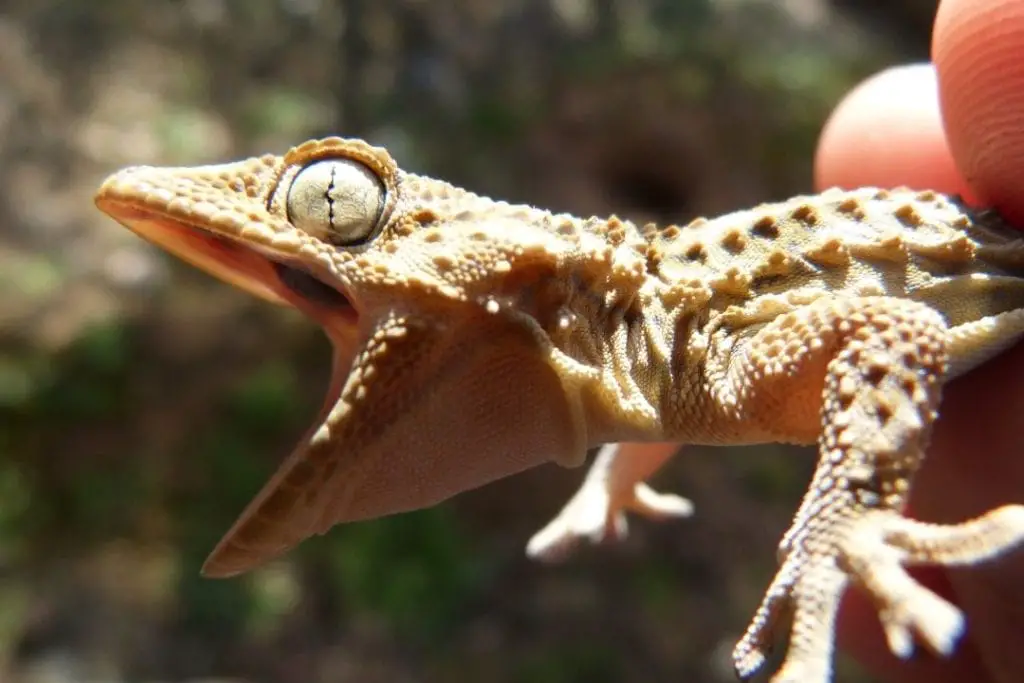
Many reptiles are relatively quiet. Crested geckos will make squeaking sounds. Males will make sounds to woo a female. Females will squeak if they do not want to mate.
They may also squeak to warn off intruders. It sounds a bit like a rubber duck and is pretty cute, however since most noises are made to indicate displeasure, you shouldn’t make your gecko make noise.
13. Highly Varied Wild Patterns
Many wild reptiles have much more subdued appearances compared to selectively bred captive animals. Wild crested geckos come in a huge range of patterns and colors. You may see a nearly solid animal or one with patches of orange and brown.
14. Many Captive Morphs
Since crested geckos are so common in the pet trade, they come in a wide variety of morphs. You can find a range of colors and patterns.
This can be everything from a common tan all the way to orange animals with heavy patterning, with a wide range of prices.
Some animals even come in bright whites.
15. Crested Geckos Have Mostly Healthy Morphs
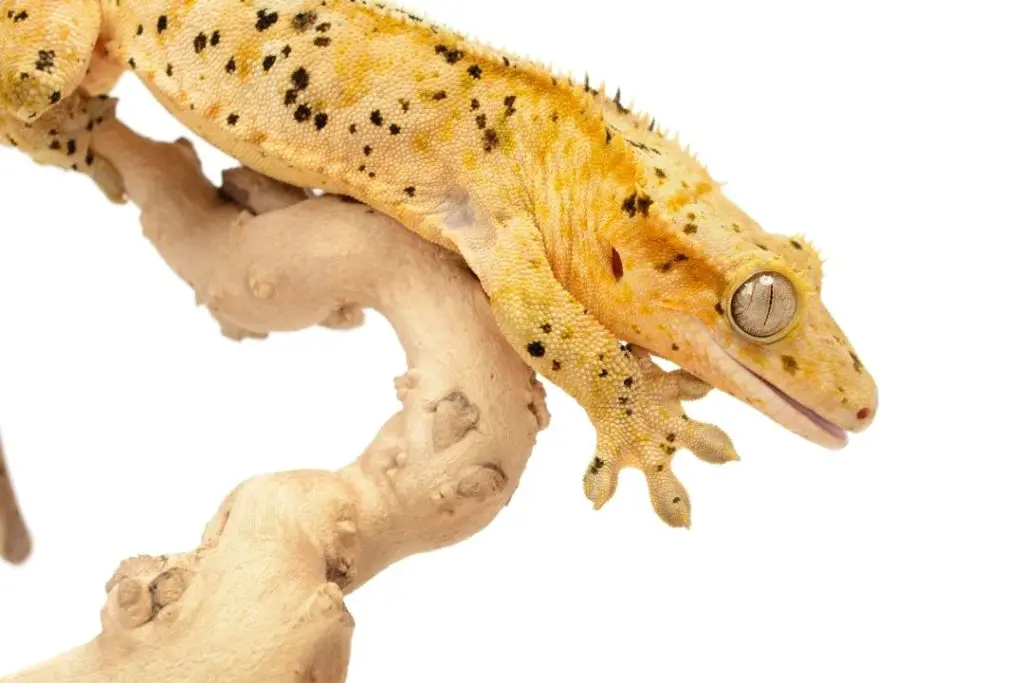
Many reptile morphs have genetic issues since many are produced with inbreeding. Some even cause health problems on their own.
This is not really the case with crested geckos. Only the super or homozygous form of the lily-white morph is known to have real problems. This morph is fatal if a geck inherits two copies of the gene.
The main trouble comes from inbreeding in the species, but most ethical breeders avoid it.
16. Once Considered a Rhacodactylus Species
Crested geckos were once considered to be closely related to gargoyle geckos and other giant geckos from New Caledonia. Genetic analysis proved that crested geckos belonged to a different genus along with two other species.
17. Long Lives
Crested geckos have long lives. They live for at least 20 years and may live up to 30. At the time of writing, many of the original animals collected from the wild in 1994 are still alive. Many of these animals are still breeding as well.
18. Not Social
Crested geckos in the wild are not social animals. They mainly come together to breed. This means that they do not always get along if kept in the same enclosure.
19. Hardy in Captivity
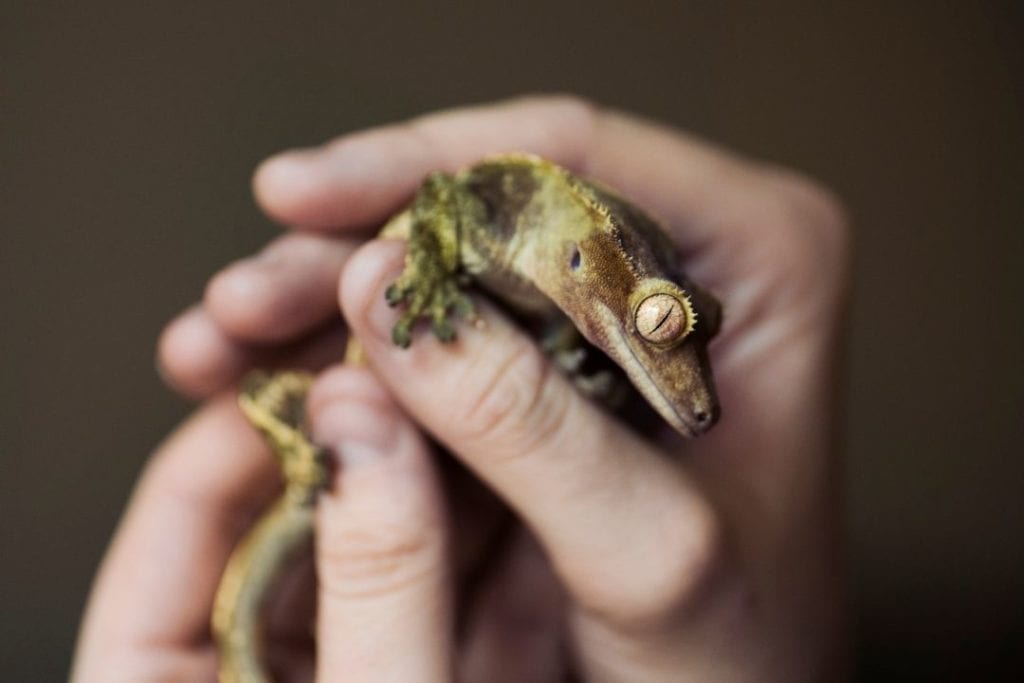
Crested geckos have very few health problems, and are easy to take care of (see my care guide for crested geckos).
Most issues like refusing to eat or loosing weight come up from parasites and diseases caught from other reptiles in the owner’s home.
They also can become impacted from a bad substrate or feeding them insects with too much chitin like superworms.
They do need yearly vet care, but many reptile vets have experience with the species so it is easy to find a good vet in many areas.
20. MBD
Metabolic Bone Disease (MBD) and other vitamin deficiencies are the biggest health risk. They need a 2:1 ratio of calcium to phosphorus or they will suffer from a lack of calcium.
You will see the bones begin to become wavy or twisted. It can be fixed if the animal is offered a calcium supplement from the vet and the husbandry is fixed.
MBD is very serious since it can result in bones so deformed the animal can’t survive. Always feed a proper diet.
21. Medium Geckos
Despite being called giant geckos, these are more of a small-to-medium compared to other geckos.
They are only 6-10 inches long as adults and most will be 30-60 grams. Without their tails, they are only about 5 inches long.
22. They can Drop Their Tails
Like many other lizards, crested geckos have something called caudal autotomy. This allows them to drop their tail if they are threatened by a predator. Crested geckos have small fractures along the vertebra of their tails.
They can break these to drop the tail. The blood vessels in this area will seal off to prevent blood loss to the gecko. Once the tail is dropped, it wiggles for several minutes to try to distract the predator.
23. Tail Doesn’t Grow Back
While crested geckos do drop their tails, they do not grow them back as other lizards can. Most wild crested geckos lack their tail entirely.
24. “Frog Butt”
Crested geckos are infamous for being very sensitive in captivity.
All it takes is a car backfiring and your gecko may drop its tail. Many owners affectionately call geckos that have lost their tails “frog butts” since their stumpy tail remnant looks similar to a frog.
25. Sticky Feet and Tail
Geckos can climb very steep surfaces and stick. This is because they have little hairs on the feet and tail called setae. This uses a minor electrical force called van der Waals adhesion to allow them to stick.
The pad on the tail allows crested geckos to hang entirely by their tail. Crested geckos without a tail do lose some agility and stability, but they can survive just fine.
Conclusion
Crested geckos are great little animals with plenty of fun facts about them. If you know any facts that weren’t covered here, please leave a comment below.
